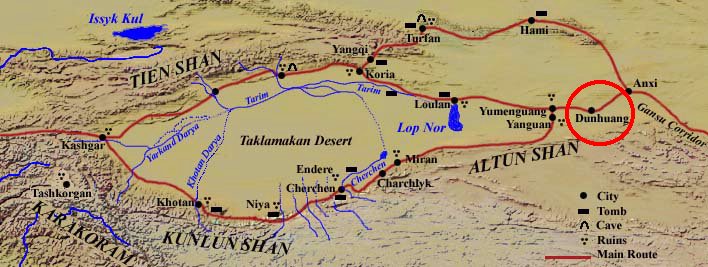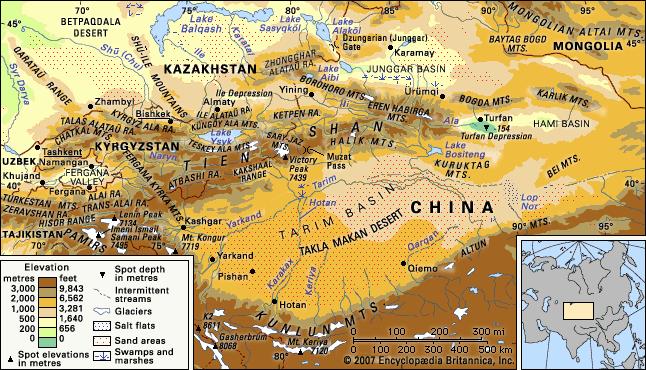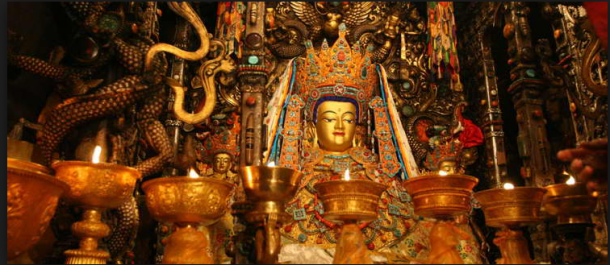Insane Things People Have Done Through History to Achieve Eternal Youth
/Man is in an endless pursuit to achieve immortality. For as far as mankind’s written history allows us to recall, humanity has always been fascinated in finding ways to extend our lifespan in the hopes of slowing, if not putting a permanent stop, to our body’s inevitable biological aging process. For some, our attempts at prolonging life is limited to the more conventional method of leading a healthy lifestyle by eating nourishing food, exercising and maintaining a positive and tranquil state of mind.
However, at several points in our past, we find people who have pushed the boundaries of human creativity and imagination in their attempt to gain eternal youth. From a more scientific standpoint that we have today, some of the lengths these individuals had taken during their lifetime to become immortal are not only deemed as completely misguided but could also be regarded as bordering on insanity.
And so, for this video, let’s enumerate the insane things people have done throughout history to achieve immortality or eternal youth.
#1 — Bathing in Sour Donkey Milk
Cleopatra came to be known in history as the last Ptolemaic queen of Egypt and is arguably the most famous member of the Ptolemaic dynasty’s royal line. But other than her role in the Roman political conflicts that eventually led to the downfall of the last dynasty of ancient Egypt, she also gained renown for her striking beauty and irresistible allure. As to how she managed to retain her youthful and brilliant glow, Cleopatra regularly bathed in sour donkey milk. In the ancient times, the donkey’s milk was used as some kind of chemical peel, as the lactic acid it contains peels off the topmost layer of the human skin. The queen was also believed to be fascinated with using other means to maintain and enhance her physical appearance such as utilizing crocodile feces as a rudimentary form of makeup foundation.
#2 — Drinking the Blood of Gladiators
The Romans were very creative when it came to coming up with various and sometimes revolting concoctions in an attempt to improve their health or extend their lifespan. One example of an unpleasant habit that the Romans largely practiced for centuries is drinking the blood of gladiators. As people who fought to the death for a living, gladiators were highly-regarded for their bravery, strength and vitality. And it was believed that those who would want to inherit a gladiator’s power must drink the warrior’s warm blood in order to consume his essence and soul. In fact, some people who suffered from epilepsy at the time considered the blood of gladiators as an effective cure for their affliction. Their blood was such a hot commodity during this era that people would rush down into the arena and sip a vanquished fighter’s blood straight from his arm or throat to absorb his power. There were also concession stands that made a lucrative living by selling the blood of these gladiators while the blood servings were still warm.
#3 — Consumption of Immortality Pills & Elixirs of Life
The Western world was not the only civilization interested in finding the answer to attaining eternal youth. Imperial China’s history is also filled with tales of men or groups of people who have dedicated much of their life in concocting immortality pills and elixirs of life that would grant ceaseless existence, be it physical or spiritual. Many Chinese alchemists have dared to make their own formulas of pills and elixirs that could supposedly cease and potentially even reverse the process of human aging. These efforts were largely supported by several emperors as well as members of the noble bloodline who hoped death would not be able to take away their power, influence and legacy.
The first emperor of the Qin Dynasty, Qin Shi Huang, for example, was not just known for being the first ruler to unify China; he was also known for his obsession in finding the key to immortality. He sent people away to look in different parts of his vast empire for a “real” Elixir of Life that would grant him eternal life. He even took immortality pills which were formulated by his alchemists. In the end, the emperor died young at 39 years of age and the most likely cause of his demise was mercury poisoning, perhaps from all the immortality pills he, consumed during his brief life.
Unfortunately, the dream of living forever was not exclusive to Qin Shi Huang. Many other emperors of China that came after him also regularly consumed immortality pills and drank elixirs which contained toxic substances, and instead of extending their lives, these pills and elixirs only shortened the duration of their respective reigns.
#4 — Self-Mummification
Mummification is the process which involves the intentional or incidental preservation of a deceased’s skin, flesh and organs. But not all mummified bodies were preserved after their death; some people in the past deliberately commenced the preservation of their corporeal body while they were still alive in order to achieve a superior and more enlightened state of being.
“Sokushinbutsu” is an ascetic practice of Buddhist monks largely performed in Japan which is believed to have started sometime in the 11th century. This extreme Buddhist practice of asceticism involved the shunning of all worldly pleasures to the point that the monks would enter a process of self-mummification even while they were still alive. The Sokushinbutsu requires a period of around 3,000 days up to ten years before the entire process is completed by devoted monks. They would have to follow a very strict diet referred to as “mokujikigyo,” which literally translates to “eating a tree.” This means that the monk could not eat anything more than the seeds and resins that could be gathered in the mountains, and must abstain from eating cereals. Eventually, these monks would fast and meditate for longer periods of time until they completely starve themselves, denying themselves even the consumption of liquids. Even in this weakened condition, they would continue to be in a state of “jhana” or meditation until they die. Their dehydrated bodies would become naturally preserved mummies that are still revered and venerated by many followers of Buddhism. Some people today even still regard these mummified monks as very much alive although their bodies are said to be in a deep meditative trance.
Hundreds of Buddhist monks in Japan attempted to achieve this extreme form of meditative state, but only 24 monks so far were granted the status of being the “Living Buddha.” Eventually, the practice of Sokushinbutsu was outlawed by the government of Japan in the late 19th century although self-mummification in their culture still endured until the 20th century. At present, however, Sokushinbutsu is no longer an advocated Buddhist practice in the country.
#5 — Drinking Gold Chloride
Among the most notable cases of people who have pursued eternal youth is that of Diane de Poitiers, the mistress of King Henry II of France. The king’s official wife was Catherine de’ Medici but he found much comfort in having the widow Diane de Poitiers as his companion even though she was 20 years older than him. History books wrote of her youthful appearance and her porcelain-like skin that never seemed to fade even as she grew older.
King Henry II’s mistress took great lengths to ensure that she maintained her physique. She kept in shape by swimming daily, horseback riding and hunting. However, her beauty secret that ensured permanence of her great white skin is her regular consumption of an elixir which contained a mixture of gold chloride and diethyl ether. This concoction was very popular at French court and was believed at the time to be an effective anti-aging treatment for its ability to harness the power of the sun and transfer it to its drinker.
However, Diane de Poitiers’s obsession with keeping her youthful beauty came at a great cost, as her desire to look forever young and the remedy she resorted to in order to preserve her appearance was the one that slowly and eventually killed her. At age 66, her daily dose of gold chloride indeed made her look half her actual age, but she is also thought to have succumbed to the secondary effect of the concoction – that is, chronic gold poisoning.
Even in modern times, man remains engrossed in its quest for eternal youth and prolonging human life. Most people have chosen to stick with more conventional methods such as maintaining a healthy and active lifestyle, while others have turned to the breakthroughs of medical science for more radical options that would allow them to enhance their beauty and cling onto their youth for as long as possible. The priorities of modern science, of course, are beyond maintaining a person’s young and beautiful aesthetics. The field of medical science is also fixated with making the human body impervious to deterioration by finding a way to permanently suppress cell death and consequently achieve actual physical immortality.
There’s no certainty when humanity may successfully unlock the secret to eternal life and perpetual youth, but should the time come that we do become immortals, what do you think would life mean for us then if we consciously know that we can never die? Perhaps that is the bigger mystery we should try and answer first.
SOURCES:
http://www.dailymail.co.uk/news/article-4577860/Man-s-craziest-attempts-history-cheat-death.html
https://en.wikipedia.org/wiki/Cleopatra
https://en.wikipedia.org/wiki/Ptolemaic_dynasty
http://hippocratescode.com/epilepsy/
http://io9.gizmodo.com/5917027/powdered-mummy-gladiator-blood-and-other-historical-medicines-made-from-human-corpses
https://www.ncbi.nlm.nih.gov/pubmed/12953616
http://www.allday.com/these-real-people-actually-tried-to-achieve-immortality-2180824159.html
https://en.wikipedia.org/wiki/Pill_of_Immortality
http://io9.gizmodo.com/7-ways-that-people-died-trying-to-become-immortal-1691947345
http://nifymag.com/the-craziest-things-people-have-ever-done-throughout-history-to-try-and-cheat-death/#.WVcLKoiGPb0
https://en.wikipedia.org/wiki/Sokushinbutsu
http://io9.gizmodo.com/the-gruesome-and-excruciating-practice-of-mummifying-yo-1515905564
http://www.telegraph.co.uk/news/worldnews/europe/france/6865939/French-kings-mistress-poisoned-by-gold-elixir.html
http://www.dailymail.co.uk/sciencetech/article-1236916/Dying-look-good-French-kings-mistress-killed-gold-elixir-youth.html













































